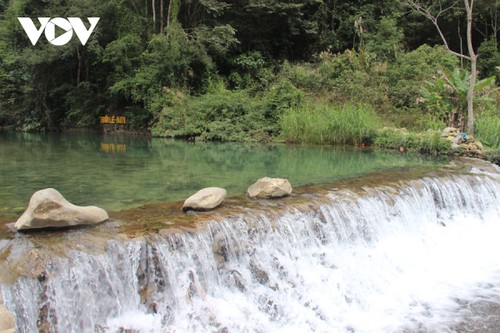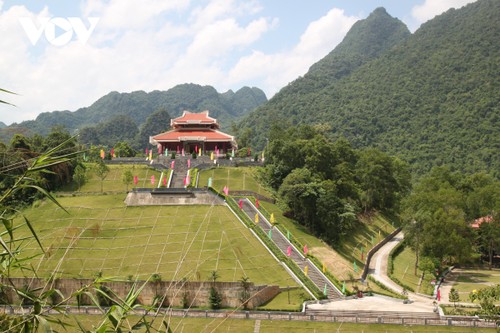Pac Bo means “riverhead” in the Tay ethnic language. It was here that President Ho Chi Minh entered in 1941, after a 30-year journey of national salvation. Pac Bo offers visitors a close look into a significant period of Ho Chi Minh’s revolutionary career and Vietnam’s history. A wood platform where Ho Chi Minh slept can be seen in Coc Bo cave. There you can also find a rock table where he worked and another rock where he sat to fish. You can offer incense at a Ho Chi Minh monument and visit a museum accompanied by a tour guide.
Pac Bo has some beautiful scenery. Turquoise water flows from Lenin spring to the foot of Karl Marx mountain.
 Lenin spring in Pac Bo Lenin spring in Pac Bo |
Pham Thu Quynh of Hanoi said, “I enjoy nature and learning about Vietnam’s history when I visit Pac Bo. Improvements in tourism services in addition to the existing folk games and humble restaurants enrich one’s visit to Pac Bo.”
Local people sell sticky rice cakes, mushrooms, vermicelli, bamboo sprouts, and wild vegetables.
Cao Bang authorities have invested in upgrading the infrastructure at Pac Bo’s special national relic site.
Dao Van Mui, Director of the Management Board of Special National Monuments in Cao Bang, said, “We have invited experts to Pac Bo to restore relics to their condition when Ho Chi Minh returned to Vietnam and lived in this place. The museum, the Ho Chi Minh Monument, and the surrounding area are protected and used for green tourism.”
 Ho Chi Minh monument in Pac Bo Ho Chi Minh monument in Pac Bo |
Cao Bang authorities have promoted the relics and encouraged people to engage in community tourism, agriculture tied to the relic site, and home production activities.
Truong The Vinh, Deputy Director of the Cao Bang provincial Department of Culture, Sports, and Tourism, said, “It’s important to train local people to do community tourism. They must work as receptionists, tour guides, chefs of ethnic food, and artists. Community tourism is vital to improving local livelihood and preserving the indigenous culture.”